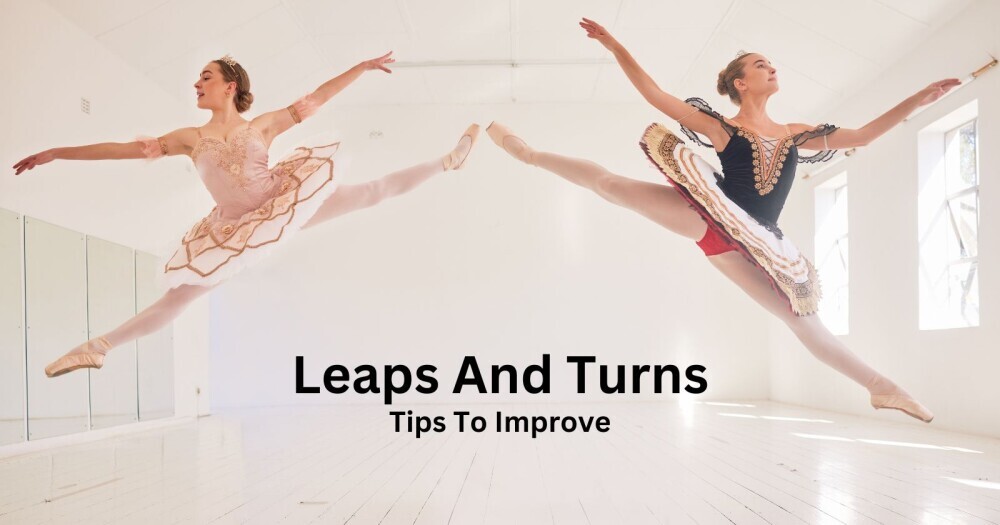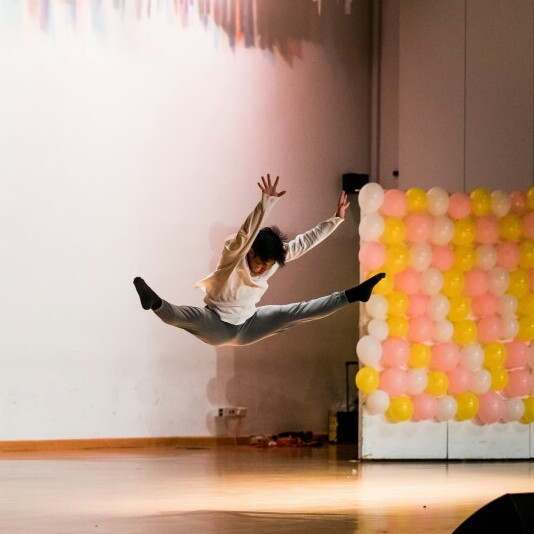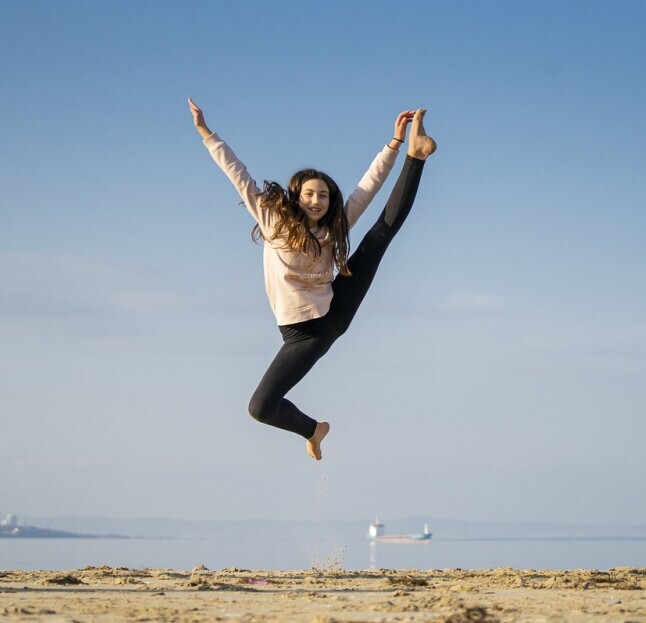There are so many things involved in improving your turns and leaps in your dancing, and it follows on from building a great foundation of technique involving all of the following skills.
Balance
Achieving balance is like the holy grail of dance, right? It’s all about core strength here. A strong core acts like a sturdy tree trunk that keeps the branches, aka your arms and legs, steady and controlled during your turns. You could try incorporating planks, hollow holds, or even Pilates into your routine to power up those core muscles.
Spotting
Spotting techniques are another biggie. Keeping your head straight and focus sharp is crucial when spinning. It’s about choosing a spot to keep your eyes locked on, which helps in preventing dizziness and maintaining the direction of your turn. Think of it as finding your anchor in a storm.
Feet
Foot positioning sounds basic, but it’s foundational. Placing your feet properly can turn a wobble into a seamless spin. Starting with a strong base, like in a good retiré position, and knowing where your feet need to be during every part of your turn will make all the difference.

Drills and exercises can really get you turning on point. Simple practices, like single or double pirouettes over and over again, can enhance muscle memory and build confidence. It’s like telling your body, ‘Hey, we’ve got this!’
Correcting the placement of the pelvis is really important and glut strength is also a good idea to work on.
Clothing and footwear can surprisingly impact your turning game. There’s no need for fancy gear, but wearing snug clothes and the right shoes can make your movements more precise and the floor less slippery.
Feedback utilization is a game-changer. Recording yourself isn’t just about capturing moments; it’s about learning. Watching your turns on video helps catch where you’re off balance or need finessing. It’s like giving yourself a backstage pass to your personal progress show!
Elevating Your Performance By Perfecting Those Leaps
Strength and conditioning for leaps starts with the legs and glutes. Think of jumps like a spring. The more force behind it, the higher you go. Squats, lunges, and calf raises should be your go-to for building explosive power.

Try these great training exercises:
- Jump without bending the knees to train the use of the toes in the push off from the floor.
- Not try jumping keeping the knees flexed and not stretching in between.
- Do some bends and try and relax your feet on the floor, as your feet do need to relax when flat on the floor.
- Try using a hulla hoop as a prop by kicking up to the hoop or turning holding it for stability.
- Try turning with a pilates ring in front of you and squeeze it as you turn.
- Try jumping different speeds to the same tempo, while keeping the height of the jumps the same.
- Do travelling step and hops from the corner of the room and try and jump as high as you can.
- Practise grand jete from the corner using a different amount of runs in between each one. Use arms with resistance and control.
Timing and rhythm are what keep your leaps looking fluid and effortless. Music isn’t just background noise. It’s the rhythm that guides your movement. Practicing with a metronome or clapping out beats can solidify your musical timing, making those leaps hit right on cue.
Eyeline should connect with audience. Before a jump lower eyeline slightly, then as you lift off lift it, and your jump will look a little higher.
Make sure your armlines match your eyeline. Balance the arms by thinking from the centre of the body.
Extend your leaps outwards for the wow factor.
The role of flexibility can’t be overstated. It’s the secret sauce for those stunning extensions. Regular stretching, especially focusing on hip flexors and hamstrings, helps to make your leaps look less like hurdles and more like graceful suspensions.
Building momentum is all about harnessing that kinetic energy. Before jumping, think about powering up your body with a solid plié. Propel yourself forward by using your arms effectively; they’re not just for balance, but to add to the force of your takeoff.
Elevating Your Turns
When you turn, you need to try and turn on the smallest part of the foot possible.
Balance always comes first so start with placing your foot in the correct position and balancing on the other on both legs. Next try turning and stoping with a balance. Try and balance long enough to say your name.
Try turning without using your arms so that you can avoid the windup and gain control in your body.
Once again use arms with resistance and remember to breathe.
Once you can do a good single with a controlled ending then start to work on your double.
Safety tips keep the fun in dancing. To leap safely and avoid injuries, ensure you’re landing on a supportive part of your foot, not flat-footed. Consider soft surfaces when practicing, which can cushion joints and last longer than hard wood every time.
Seeking professional guidance is like having a map to success. Sometimes, feedback from a coach or a professional dancer can open up new pathways to refine and perfect those leaps. They see what you might not, offering tailored advice based on experience.


This post really speaks to me! I’ve loved dancing for as long as I can remember, but turns—especially staying balanced through multiple rotations—have always been a bit of a struggle. Your tips on spotting and engaging the core are super helpful. Sometimes I overthink my movement instead of trusting my training and letting my body flow, and that usually throws me off balance.
I especially appreciate the reminder to keep practicing consistently and to be patient with the process. It’s encouraging to know that even small tweaks in technique and posture can lead to big improvements over time. I’ll definitely be trying these tips during my next practice session!
Yes it does take time and patience Alice, but don’t give up, you will get there.